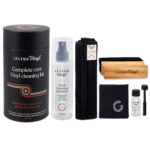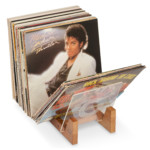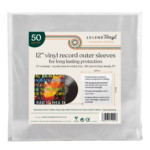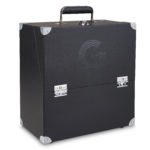Great, rich and lush sounds emanating from your turntable start with a clean, static-free vinyl record. Whether you are a casual collector or a hardcore audiophile, it’s important to know the importance of cleaning both used and brand-new records.
Almost every new record comes positively charged with static electricity when you remove it from the sleeve. The static is annoying because it attracts dust and airborne particles, leading to poor sound quality and the need for the record to be cleaned. A single piece of sharp debris that is attracted to your record could ruin it before you ever get to put the needle down.
New records and recently purchased used records are always contaminated with dust, debris, dirt and other agents used during the record manufacturing process. The static that your records carry will attract new dust and hold onto any old dust from the previous owner’s home or manufacturing plant. Sometimes new vinyl also comes with a release agent on the surface, which can harm the stylus of your turntable and reduce sound quality.
Records that are regularly cleaned don’t just sound better; they also last significantly longer. Playing records that are dirty can cause permanent damage to the vinyl itself. Maintaining your records with cleaning is important whether your vinyl records are common, or rare records that you spent years hunting down. As the stylus follows the grooves on the surface of your record, pressure is placed on the vinyl. The friction created during the process creates heat. The playing process is not easy on vinyl, and it’s even harder on vinyl that is dirty and dusty.
“Legend Vinyl” cleaning brings your dirty and dusty records back to life. Your records will last longer, provide the best audio quality possible and won’t cause damage to your delicate stylus.
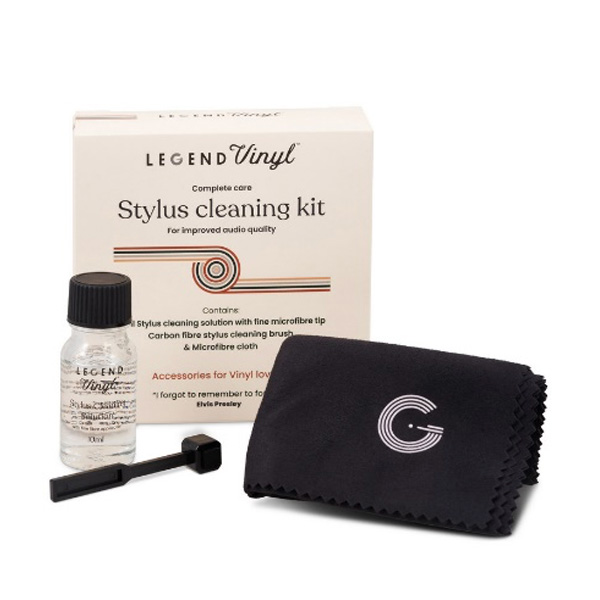
The importance of cleaning the stylus
Regularly cleaning the stylus will not only ensure a better listening experience, but it can also mean a longer life for your records. By practicing appropriate stylus care, you’ll be able to avoid the following:
Playback problems: No cartridge sounds good once it has accumulated a layer of dust. For accurate sound reproduction, there needs to be close contact between the record grooves and the stylus. Dust tends to interfere with this contact and can cause a scratchy or muffled sound that will lack in detail. A stylus that’s dirty will be more likely to jump out of the grooves. Actually, a dirty stylus is one of the most common mis tracking causes. Vinyl damage: Dirt, dust, and other types of debris can act as abrasives when they’re caught between the record groove and the stylus. Each time you play a record, you’ll end up wearing it down a little. A dirty stylus can also speed up this process, leading to clarity loss.
If you listen to your records often, you should clean the stylus at least once a week. While opinions tend to vary in terms of how frequently a stylus should be cleaned, the rate of dust accumulation on the stylus can depend on how clean your records are and how often you use your turntable. Regularly cleaning your vinyl before you play them should be your first line of defence against a dirty stylus. If your vinyl is older and has several layers of dust in the grooves, then you may need to invest in a vinyl record washer.
Make sure you keep a close eye on the stylus the next few times you listen to your records in order to get a better sense of how fast dust builds up and where it tends to accumulate. You should also beware of any dust accumulation located directly behind the tip of the stylus. This is actually very easy to miss and can cause distorted sound.
On average the stylus can last between two to three years or up to three thousand hours of play. But the truth is, this figure can easily be doubled if you follow a proper maintenance routine.
Remember, the thing that causes the stylus to wear down is dirty records. Dirt acts as an abrasive. A stylus that’s well taken care of and used on clean vinyl can last for several years with very little wear.
“Legend Vinyl” stylus Cleaning Kit for improved audio quality.

How to store your vinyl
Vinyl records are treasures you and your family can enjoy for many years. Quite often, they are passed down from one generation to the next, as loved ones share the music of their days.
However, if you’re a true vinyl collector, you understand the importance of preserving your records. They must be treated with care, as they are very fragile and can be easily damaged. Records that are scratched, scuffed or bent can result in skips in the music – or worse, not play at all!
ALWAYS store records in their album jackets. The only time the record should be out of its jacket is when it’s being played according to most vinyl experts. That means putting your record away as soon as you are done listening to it. By leaving it on the turntable longer than necessary, you are allowing dust and dirt to accumulate on the records, which can then impact sound quality.
ALWAYS store your vinyl collection in an upright position. Vinyl records need to be stored in an upright position to ensure they stay in good condition. Records that have been stored at a slant for an extended period of time can warp because of the uneven pressure that has been placed on them. This is why records are often kept in crates that position them upright.
Never store records stacked on top of one another. Stacking your record collection could permanently damage your records, whether they’re in their jackets or not. The weight will lead to warping of the vinyl and even possible cracking or scuff marks. You’re also putting the album jacket artwork at risk when you stack records in storage.
“Legend Vinyl” storage solutions for your vinyl collection.

How to protect your Vinyl Record Collection
Storing your vinyl records safely is essential. Whether it’s for day-to-day accessibility or the long-term in storage boxes, it’s imperative you store them correctly to ensure they last a lifetime and beyond.
After all, you’ve worked hard to afford your collection, and the chances are, you’d like them to remain in great condition for as long as possible. If you’re anything like me, you’d probably like to pass them on to your children eventually. The good news is, a great deal of record care comes down to proper storage, and in many cases, much of the widely accepted best-practice is simple common sense.
Record Sleeves- Inner Sleeves
Inner sleeves are the most critical component in proper vinyl storage, as they’re the only product that will come in direct contact with your records. Most new records are shipped with standard paper inner sleeves, which transfer paper flakes onto your record’s surface and can even cause surface wear over time.
The safest option is to replace the standard sleeve with a higher-quality polyethylene inner sleeve that will protect against static build-up and contamination.
Outer Sleeves
To protect your artwork, and prevent airborne dust contaminating the record when stored, you also need to invest in outer record sleeve.
Traditionally, collectors would buy thick plastic PVC outer sleeves – don’t do that! PVC-based products can cause contamination and serious damage to your records. The theory is, because vinyl records are also made from PVC (an oil-based product), the two items can merge given the wrong climate. The result is a misting effect on the record, which is audible as hiss.
The safest outer record sleeves are made from Polypropylene
“Legend Vinyl” sleeves to protect your vinyl

